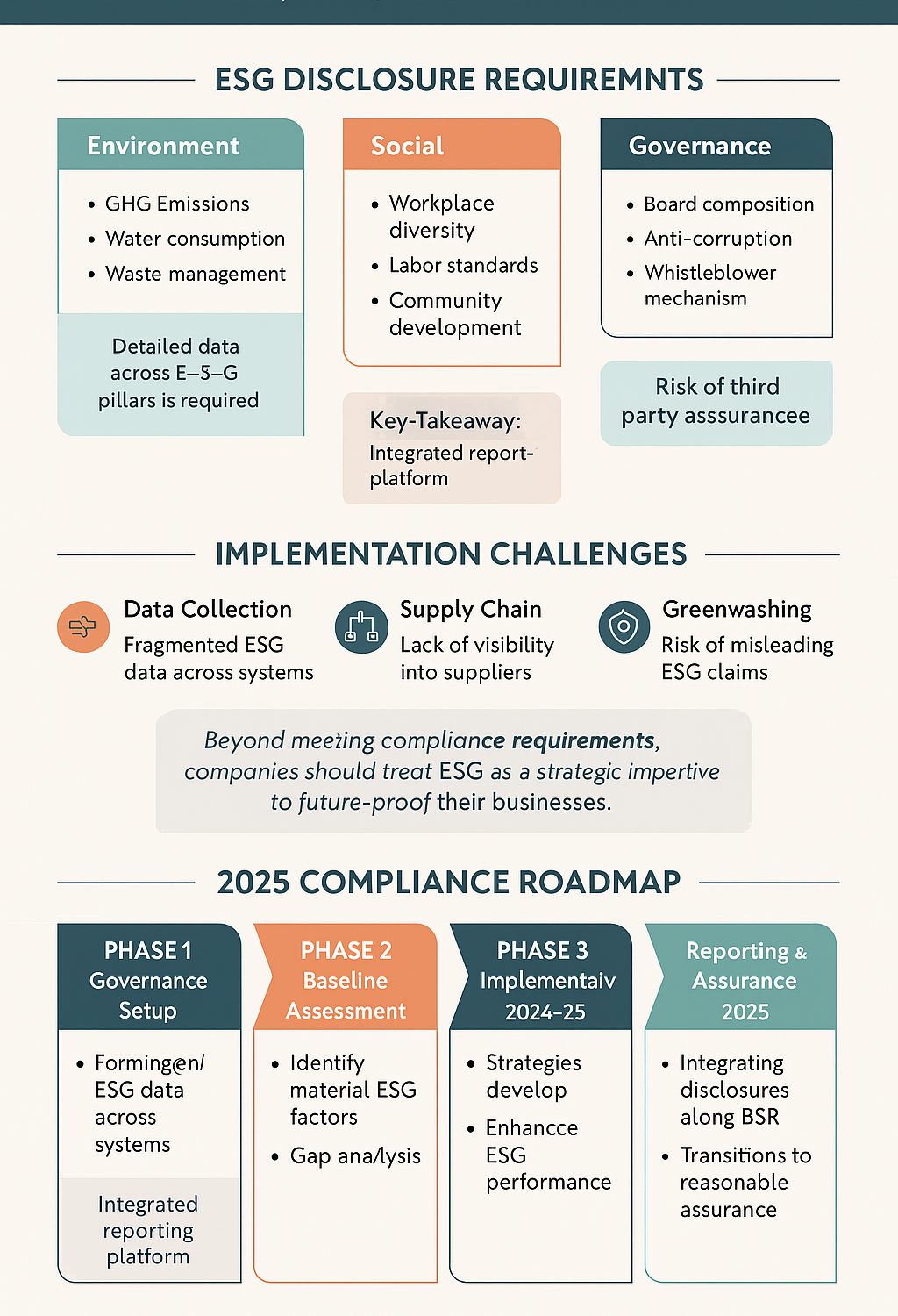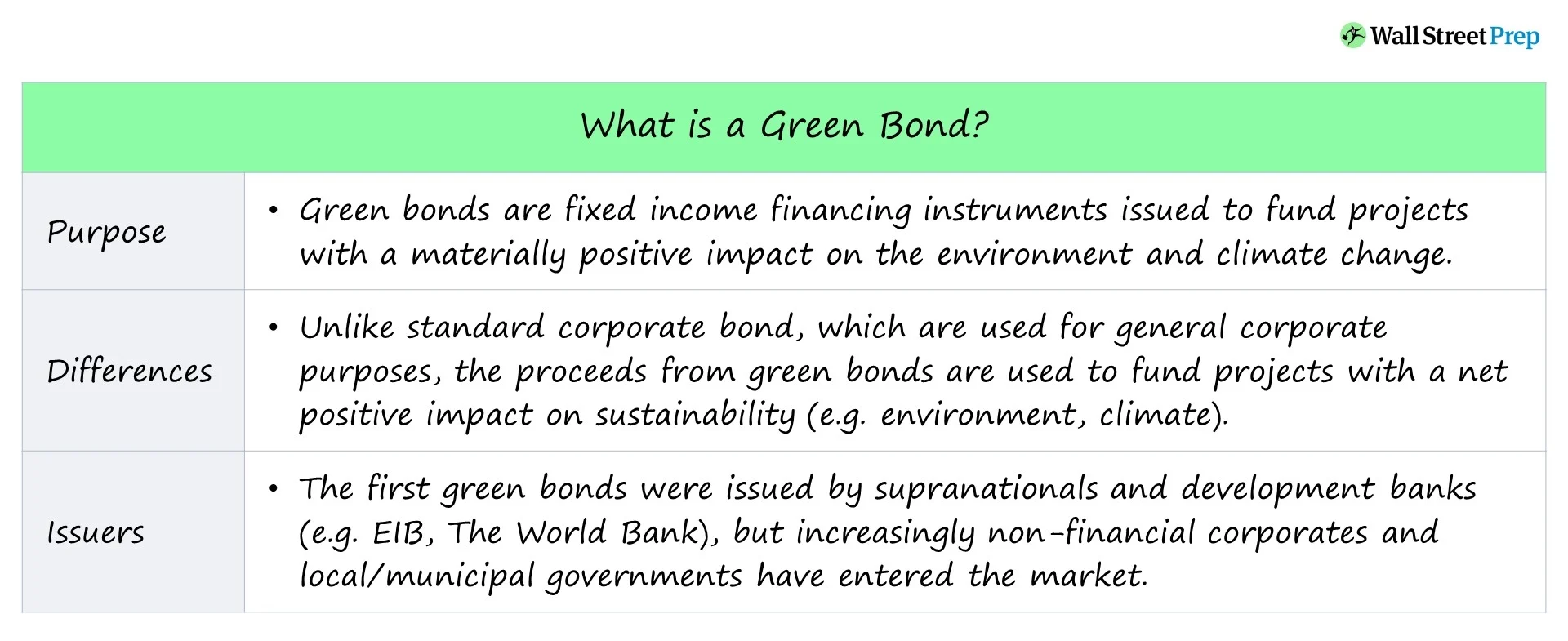Environmental, Social, and Governance (ESG) compliance is no longer optional—it’s a strategic necessity for Indian corporates. As global and domestic investors integrate ESG considerations into capital allocation, companies must evolve from reactive reporting to proactive sustainability leadership. The Securities and Exchange Board of India (SEBI) has introduced the Business Responsibility and Sustainability Reporting (BRSR) framework, designed to align Indian corporate disclosures with global standards while embedding ESG into business strategy.
This comprehensive guide explores:
- The evolution of ESG regulation in India
- BRSR’s structure and requirements
- Challenges and practical solutions
- A phased compliance roadmap through 2025
- Best-in-class case studies
- Emerging trends and regulatory convergence
With 93% of global investors integrating ESG into decision-making (EY, 2022), Indian businesses must recognize that ESG is not just a compliance exercise—but a powerful tool for resilience, innovation, and competitiveness.
1. The ESG Imperative in India
India’s economic expansion comes with rising environmental and social externalities:
- 3rd largest emitter of greenhouse gases globally (Climate Watch, 2022)
- 75% of listed companies face ESG-related shareholder activism (KPMG, 2023)
- 82% of institutional investors factor ESG into investment decisions in India (Deloitte, 2023)
In this context, ESG is rapidly becoming a key differentiator. Stakeholders—from investors to customers—expect businesses to demonstrate measurable sustainability performance and governance ethics. The BRSR framework formalizes this expectation into a structured, mandatory format.
2. Regulatory Evolution of ESG in India
Phase 1: Foundation (2009–2011)
- Ministry of Corporate Affairs (MCA) introduced Voluntary CSR Guidelines
- National Voluntary Guidelines (NVGs) articulated nine responsible business principles
Phase 2: Initial Mandates (2012–2020)
- Companies Act 2013 mandated 2% CSR spend for qualifying companies
- SEBI introduced Business Responsibility Reports (BRR) for top 100 (later top 500) listed firms
Phase 3: Institutionalization through BRSR (2021–Present)
- SEBI issued BRSR guidelines via circular in May 2021
- Mandatory for top 1,000 listed companies from FY2022–23
- Introduced three-tier model:
- Basic: Mandatory disclosures
- Leadership: Voluntary forward-looking practices
- Value Chain: Supplier ESG performance (forthcoming mandate)
“BRSR represents India’s most significant step toward global-aligned sustainability reporting.” — SEBI, 2022
3. BRSR Disclosure Framework: Metrics that Matter
Environmental (E):
- GHG Emissions: Scope 1, 2, and 3 data in line with TCFD
- Water Use: Withdrawal, consumption, and recycling per GRI 303
- Waste Management: Circular economy initiatives, hazardous waste tracking
Social (S):
- Diversity and Inclusion: Gender ratios, PwD representation, leadership equity
- Supply Chain: Fair wages, safety standards, grievance mechanisms
- Community Engagement: CSR impact metrics, volunteer hours, partnerships
Governance (G):
- Board Composition: Gender diversity, independent directors, tenure disclosures
- Ethics Programs: Anti-bribery training completion, Code of Conduct enforcement
- Whistleblower Effectiveness: Case resolution times, protections offered
4. Implementation Challenges & Solutions
Challenge 1: Inadequate ESG Data Infrastructure
- Problem: 68% of companies lack dedicated ESG data systems (PwC, 2023)
- Solution: Implement ESG tech platforms like SAP Sustainability Control Tower, Workiva, and Microsoft Cloud for Sustainability to automate and verify disclosures
Challenge 2: Supply Chain Complexity
- Problem: Just 29% of Indian firms assess supplier ESG performance (KPMG, 2023)
- Solution: Develop ESG supplier scorecards, use blockchain-based traceability systems, and include ESG clauses in procurement contracts
Challenge 3: Greenwashing Risks
- Problem: 41% of corporate sustainability claims in India were misleading (SEBI review, 2023)
- Solution: Obtain third-party assurance (e.g., EY, KPMG), adopt science-based targets, and ensure alignment with frameworks like CDP, GRI, and ISSB
5. 2025 Compliance Roadmap: A Phased Approach
Phase 1: Governance Setup (2023–2024)
- Form ESG sub-committee at board level
- Appoint a Chief Sustainability Officer (CSO)—65% of N100 companies already have one (EY, 2023)
- Define ESG vision, risk appetite, and accountability structure
Phase 2: Baseline Assessment (2024)
- Conduct a double materiality assessment (financial + environmental/social impact)
- Benchmark current disclosures against BRSR metrics
- Identify quick wins and long-term transformation levers
Phase 3: Strategic Implementation (2024–2025)
- Develop Net-Zero or decarbonization roadmap with interim targets
- Integrate ESG KPIs into executive remuneration
- Train internal teams and build ESG capacity across departments
Phase 4: Reporting & Assurance (2025)
- Shift from limited to reasonable assurance for key ESG metrics
- Align with integrated reporting frameworks (IR, SASB, GRI)
- Publish ESG insights in annual reports for enhanced transparency
6. Case Studies: Indian Leaders in ESG Integration
Tata Consultancy Services (TCS)
- Achievement: Carbon neutrality in Scope 1 & 2 by 2023
- Key Strategy: 100% renewable energy, AI-driven building energy systems, green data centers
Mahindra Group
- Achievement: 50% reduction in water intensity between 2019–2023
- Key Strategy: Adoption of zero liquid discharge technology, supplier engagement on water stewardship
These leaders show that integrating ESG enhances operational efficiency, stakeholder trust, and brand equity.
7. Future Regulatory Trends & Global Convergence
Domestic Developments:
- BRSR Core: Assurance becomes mandatory from 2025
- Extended Producer Responsibility (EPR): Stricter enforcement and new sector coverage
- ESG Ratings & Indices: Indian exchanges to launch ESG-linked indices
Global Alignment:
- SEBI’s proposed roadmap for adopting IFRS S1/S2 (ISSB standards)
- Indian subsidiaries of EU-based firms will need to comply with EU CSRD
- Expected convergence with US SEC climate disclosure rules
8. Conclusion: ESG as a Strategic Differentiator
BRSR offers Indian companies a unique opportunity to embed ESG principles into their DNA, not just for compliance but to drive innovation, de-risk operations, and access sustainable capital. With thoughtful implementation, firms can turn ESG from a checkbox into a competitive edge.
Strategic Recommendations:
- Build robust ESG data architecture
- Formulate green financing and transition plans
- Upskill sustainability and finance teams to speak a common language
- Engage with stakeholders through transparent, credible reporting
“Companies treating BRSR as transformation—not compliance—will lead.” — McKinsey India, 2023
References
- SEBI. (2021). BRSR Circular No. SEBI/HO/CFD/CMD-2/P/CIR/2021/562
- EY. (2022). Global Institutional Investor Survey
- KPMG India. (2023). ESG Reporting Maturity Index
- Deloitte. (2023). India ESG Preparedness Report
- PwC India. (2023). ESG Data Management Survey
- McKinsey & Company. (2023). ESG Premium in Emerging Markets






